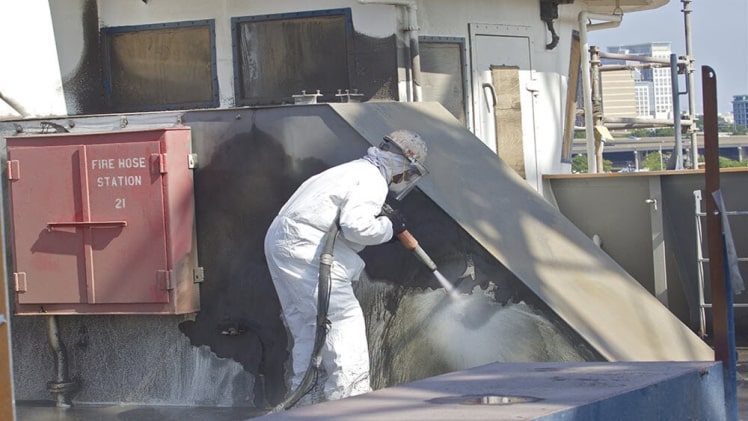What Is Blast Cleaning?
Blast cleaning is a surface modification process widely undertaken on metals or substances before creating a protective layer. Abrasive projectiles are released at the surface of the metal during blast cleaning.
Mill scale, hydrous oxides, and other surface textures could adversely impact the protective layer application procedure and the metal’s resistance to rusting and thus are removed by the effect of these abrasive projectiles on the surface of the metal.
Blast Cleaning Is Explained In Detail
Blast cleaning employs a variety of techniques to accelerate abrasive particles to a speed that allows them to generate enough impact energy to manage a material’s surface. Compressed air and rotational wheels are two typical techniques.
Blast cleaning prepares a substance’s surface by blasting it with abrasive particles or mediums. Dust, glass beads, metal shots, and various other materials are among them.
These granules might be released either dry or moist. Abrasive particles from blast cleaning can occasionally be captured for recovery and recycling.
The abrasive particles or medium employed, as well as the applied load, determine the finish type. To attain the desired finishing, research can identify what blast cleaning variables are required.
Furthermore, about existing surface preparation methods such as manual cleaning and chemical cleaning, the blast cleaning procedure is the most practical and cost-effective.
What Are The Blast Cleaning Benefits?
- It removes rust, scale, paint, grime, grease, rust, and other contaminants from the surfaces and reveals the parent material.
- It creates a consistent surface roughness or foundation profile, which increases surface area and improves bonding force with paints or other coatings.
- It also gives the materials a matt appearance, which improves their looks. Surface imperfections such as welding droplets, scratches, cutting, or file marks are removed.
- Electroplating, coloring, powder coating, and silicone lining all benefit from it.
- Gives marble and quartz flooring a slip-resistant finish.
- The US Department of Agriculture, the Federal Drug Administration, and the Environmental Protection Agency have all certified dry ice blast cleaning for commercial use. It is non-poisonous, non-volatile, and non-conductive.
- Blast cleaning can also remove the strongest artwork; either you want to add a new pattern to the top of your property or remove any unpleasant paintings. Blast cleaning removes spray paint from hard-to-reach areas, giving you a clean canvas to work on.
- Unlike some other cleaning solutions, Blast cleaning is a faster process in which things are done quickly and accurately. Because of the quickness of this procedure, you may complete blast cleaning shortly and go on to the next phase in the process.
What Are Some Of The Blast Cleaning Uses?
- Hardwood, metal, masonry, concrete, and stone can be cleaned by sandblasting. Castings, forgings, and manufactured items are all subjected to the shot surface treatment.
- However, with poor surface pretreatment, any coating, no matter how much it costs, is destined to fail. As a result, blast cleaning the surface before spraying, powder coating, rubber lining, and electroplating is required.
- By giving a white color to SS manufacture, glass beadwork minimizes welding traces and scratches from grinding markings. It is mainly used in pharmaceutical factories, stainless steel pipes and fittings, textile industries, and agribusiness.
- Abrasive blasting is used for a variety of purposes, including prepping non-ferrous surface layers before re-coating, carving decorative stonework, and polishing soft metals and polymers.

